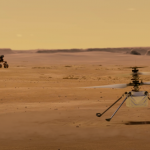New research of oldest light confirms age of the universe0
- From Around the Web, Space
- July 17, 2020
Just how old is the universe? Astrophysicists have been debating this question for decades. In recent years, new scientific measurements have suggested the universe may be hundreds of millions of years younger than its previously estimated age of approximately 13.8 billions of years.















